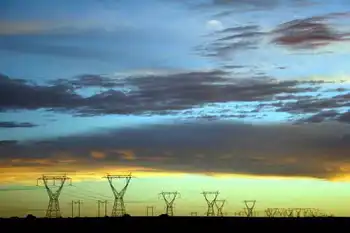Team CANDU New Brunswick to Conduct Feasibility Study for Second Nuclear Power Plant at Point Lepreau
By Canada News Wire
NFPA 70e Training - Arc Flash
Our customized live online or in‑person group training can be delivered to your staff at your location.

- Live Online
- 6 hours Instructor-led
- Group Training Available
"We are extremely pleased that the Province of New Brunswick has accepted Team CANDU New Brunswick's proposal to conduct a feasibility study for the new ACR-1000," said AECL's Chief Operating Officer Ken Petrunik. "We are confident the study will clearly demonstrate that a second unit will provide an energy-secure future and economic self sufficiency for the Province."
Premier Shawn Graham said the feasibility study is an important step forward in the energy sector in New Brunswick, and could help produce tremendous growth in the province.
"This feasibility study may lead to a significant private sector investment into electricity generation in New Brunswick creating up to 4,000 jobs during construction 500 permanent, high-paying jobs to operate the facility," said New Brunswick Premier Shawn Graham. "It further cements New Brunswick's growing position as an energy hub on the Eastern seaboard and could be yet another catalyst towards our goal of self sufficiency by 2026."
Energy Minister Jack Keir added the feasibility study and other energy projects are having a positive impact on the region and province.
"Our ongoing work with Team CANDU has already brought positive spin-offs for the province like a Centre of Excellence for Retubing of CANDU reactors," Keir said. "And the potential for future collaboration is even greater. The energy sector has the potential to bring transformational change to our province, and this is further evidence of this fact."
The feasibility study will be funded by Team CANDU and is designed to evaluate the potential for an ACR-1000 to be constructed at the Point Lepreau Generating Station near Saint John, New Brunswick, and will examine the business case for private sector investment; identify prospective markets for this new source of power; and indicate the potential environmental and socio-economic impacts of this project.
Each of the Team CANDU New Brunswick partners will take on a share of the project feasibility study that is expected to cost approximately $2.5 million and take up to six months to complete.
Team CANDU New Brunswick represents five of the world's leading nuclear technology and engineering companies that have joined together to provide a nuclear energy solution to meet the province's growing electricity needs. Team CANDU New Brunswick draws on the experience and expertise of Atomic Energy of Canada Limited, Babcock & Wilcox Canada, GE-Hitachi Nuclear Energy Canada Inc., Hitachi Canada Ltd and SNC-Lavalin Nuclear Limited.
"Team CANDU New Brunswick has the expertise and experience to deliver a safe and high quality energy solution for the Province of New Brunswick," said Patrick Lamarre, President of SNC-Lavalin Nuclear. "We are proud of our record for delivering turnkey projects on-time and on-budget, and we look forward to putting our combined expertise to work for the benefit of New Brunswickers."
The ACR-1000 is an advanced CANDU reactor, building on the pedigree of the existing technology to deliver the same benefits at an even lower cost.
When constructed at Point Lepreau, the ACR-1000 will have a projected output of 1085 megawatts of electricity and a planned operating life of 60 years.
Mr. Petrunik added, "Team CANDU NB fully supports the province's vision to become a world-class centre of excellence for nuclear power research and development. The ACR-1000 is a made-in-Canada solution that we believe is the best choice for New Brunswick in terms of safety, proven performance and project delivery."











